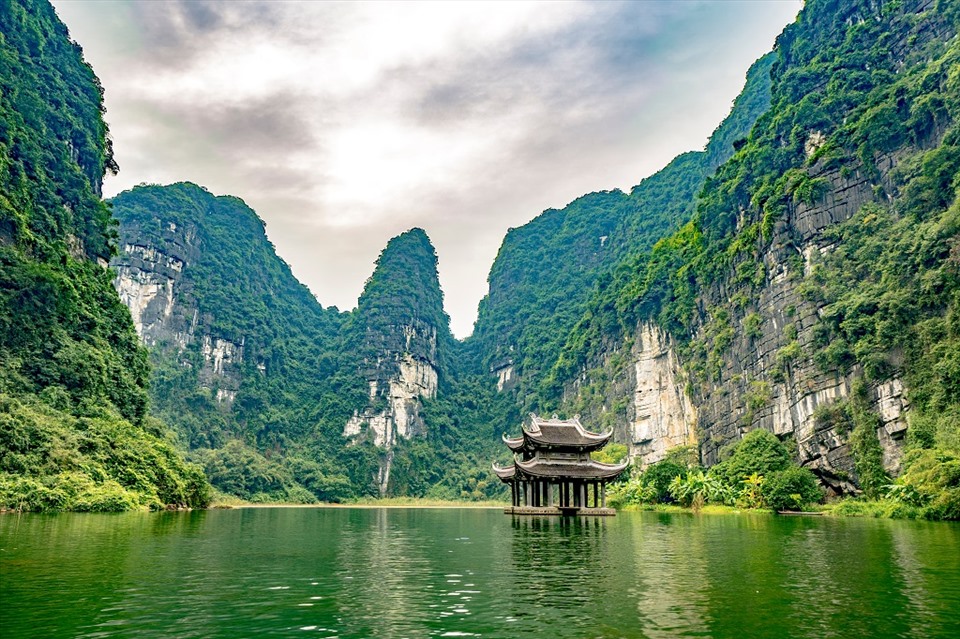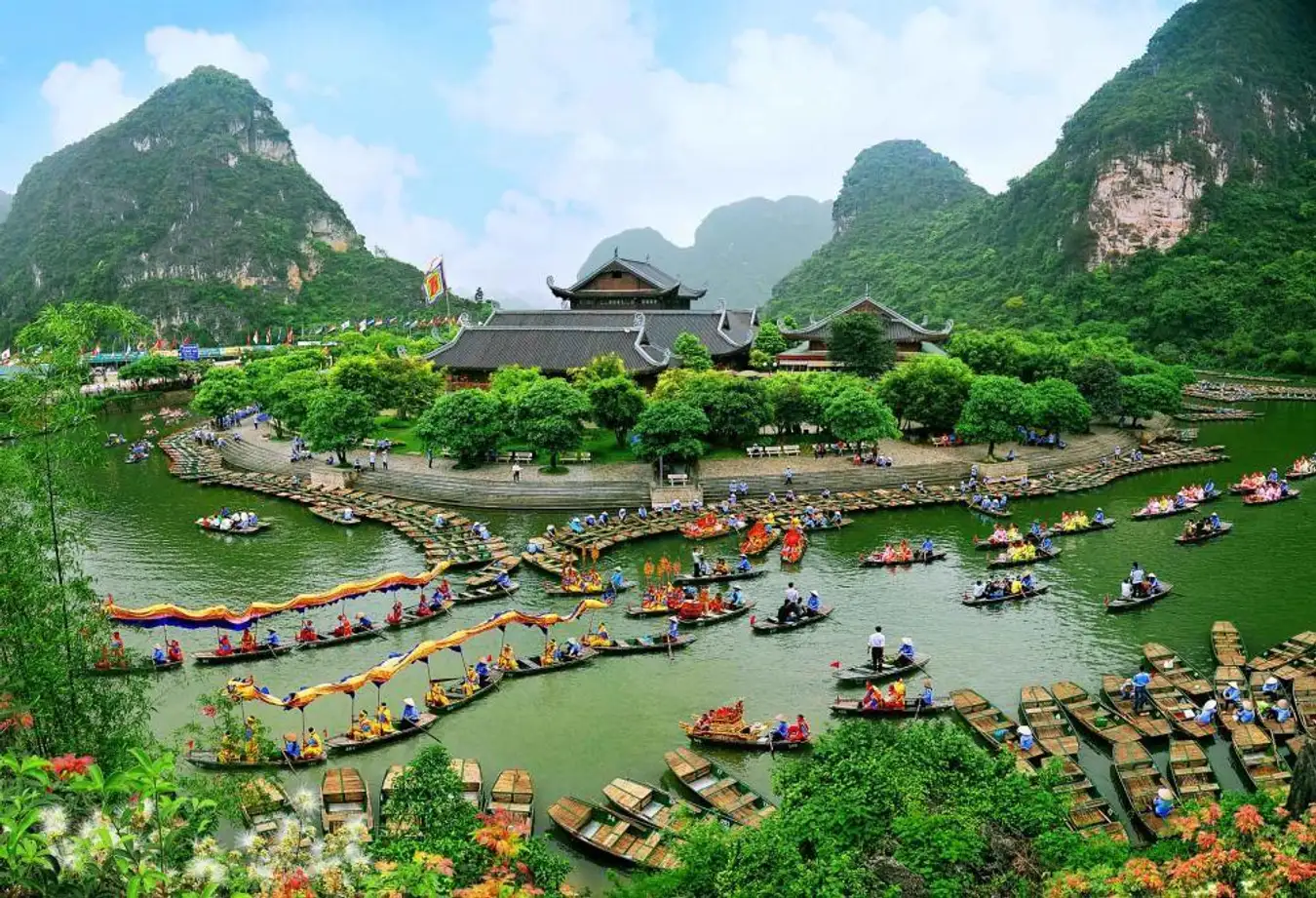1. Tourism is not just about seeing, but about listening to stories
From the UNESCO-recognized Trang An Landscape Complex to the sacred Bai Dinh Pagoda – a symbol of contemporary Vietnamese Buddhism – each site in Ninh Binh is interwoven with a story. Whether it’s the founding journey of King Dinh Tien Hoang, the Buddhist imprints of the Ly and Tran dynasties, or ancient legends passed down through generations, every destination speaks.
Visitors to Ninh Binh don’t just come to row boats through limestone karsts or visit temples – they come to hear the past, to understand cultural identity, and to gain a deeper, more memorable experience than mere photo ops or social check-ins.
2. Trang An – a model of heritage tourism integrated with conservation
Trang An is not only famed for its breathtaking scenery, but also proudly holds the title of Vietnam’s first mixed cultural and natural World Heritage Site. What makes it truly special is the strict regulation of all tourism activities—no overdevelopment, no environmental disruption.
Boat tours at Trang An take visitors through natural caves, ancient temples, and archaeological relics, unfolding a journey through time — from prehistory to the feudal era — all preserved and told in vivid form. This is a sustainable tourism model that walks hand in hand with heritage conservation, something Ninh Binh has excelled at.
3. Bai Dinh – spiritual development in harmony with architecture and nature
Bai Dinh Pagoda is not only a place of pilgrimage but also a monumental complex that embodies Eastern philosophy, nestled in pristine mountainous forest. Its structures are built in harmony with nature, using traditional materials, serving spiritual and cultural purposes without disturbing the natural landscape.
The development of Bai Dinh is also paired with wellness tourism services, herbal experiences, and eco-accommodation, promoting a model that connects culture, lifestyle, and nature — creating a distinctive tourism complex unlike any other.
4. Community-based tourism – preserving local identity
In Ninh Binh, traditional craft villages, folk festivals, and regional cuisine are becoming valuable "soft resources" that enrich the tourism journey. Community-based tourism in areas like Gia Vien and Nho Quan not only brings income to locals but also helps preserve living culture – an intangible asset often overlooked amid mass tourism.
5. From sustainable to exceptional
As mass tourism reaches saturation, Ninh Binh is carving out its own path – one that is slow, sustainable, and centered on culture and humanity. It’s this very distinction that keeps visitors coming back – not just to “have fun,” but to learn, connect, and truly feel.


